![]()
Masonic bookplates – the ‘Brethren’s spiritual coats of arms and marks’
![]()
In a previous work, we called Masonic bookplates the ‘Brethren’s spiritual coats of arms and marks’ [1]
We would now like to add a new item to the file, one which raises many questions for the historian of Freemasonry.
It is a ‘typographical’ bookplate, i.e. without fine heraldry or specific picture; just a label mentioning the name of the owner of the book.
What makes it interesting for us is its date: 1657, and the fact that the possessor of the book presents himself as a ‘Free Mason’.
This paper was first published in French in Franc-maçonnerie Magazine, n°63, July 2018.
Translated from the French by Jean-Pierre Gonet.

Robert Trollap’s bookplate
IMAGE CREDIT: Author’s private collection
The inscription is ‘Robert Trollap (of Yorke and Newcastle, Free-Mason) his booke, 1657’.
Infrequent as it is, this bookplate is well known of British specialists: it can be found on a number of books kept to this day in public or private collections.
Why is this date mentioned – a rather unusual practice with bookplates? One can imagine that Trollap wished to take stock of his books in 1657, or even to take a first inventory.
But we are, of course, primarily interested in this display of his quality of ‘Free-Mason’, more so as it is associated with the old City of York.
What can we know of Robert Trollap? [2] What kind of ‘Free-Mason’ could he be?

York Castle (Clifford’s Tower) in 1644. Source: Cooper, Thomas (1869-1937), ‘History of York Castle’,
IMAGE LINKED: wikimedia Attribution 4.0 International (CC BY 4.0)
He was born in Yorkshire, probably circa 1620, in an old family of York stonecutters.
He was a member of the craft himself, received as ‘Freeman’ of the City of York in 1647, although he joined the elite of the construction world by becoming an architect.
He mainly worked in Northumberland and Durham. He settled in Gateshead, opposite Newcastle on the other bank of the Tyne.
He is known especially for various country manors in the region, as well as for the covered market and the Newcastle Guildhall – the headquarters of corporations, built between 1653 and 1658.

Headquarters of the Guild of Merchants in York, where Robert Trollap was made a ‘Freeman’ in 1647
IMAGE CREDIT: Author’s private collection
In 1660, he adopted the ‘Palladian style’ to build the new manor hall of Eshott and he introduced baroque elements in the construction of Capheaton Hall in 1667.
He was a man of culture: having a plate for one’s books shows a special relationship to them.
The library at Harvard University – the remote repository of various fields of interest – still has a musical score for viola da gamba by William Lawes which belonged to him.
Perhaps the ‘Free-Mason’ on the bookplate simply refers to his quality as an ‘operative’ Mason.
The expression ‘Freemason’, deriving from ‘Free-stone Mason’, that is a Mason who works on a quality of stone particularly adapted to stone cutting, is typically English, while it is, for example, ignored by the Scots.
This is all the more interesting as, whereas Newcastle is still in England, the city is quite close to Scotland.
Moreover, the ‘operative character’ of his Masonic quality seems to be confirmed by an inscription on a rare threefold carpenter’s ruler kept in the National Museum of Scotland in Edinburgh.
On one of the folds there is the following engraving: ‘1655, Robert Trollap of Yorke free mason’. The matter would therefore be rather simple.
Robert Trollap would have just mentioned his membership in the world of operative Masons by using the English phrase or ‘Free-Mason’.

Graduated three-foot brass scale in three parts, inscribed ‘1655 Robert Trollap of Yorke Free Mason’, 1655
IMAGE CREDIT: © National Museums Scotland
Some elements, however, incite the historian to inquire further.
In fact, the name Trollap also appears in a context which seems more ‘speculative’ than ‘operative’.
In 1671, the bishop (Church of England) of Durham delivered a charter to the ‘Guild of Freemasons, carvers, stone cutters, brickmakers, glaziers, painters, founders, nailers, etc.’ of the small town of Gateshead.[3]
It was, indeed, upon Trollap’s initiative that the charter was requested from the bishop. It was hoped that by such official recognition and a few privileges, social and economic life could be restored in that small town which had been weakened by the civil war and Cromwell’s regime.
Now, out of the five names linked with the ‘Free-Masons’…four, including the bishop’s secretary himself, could not have been ‘operatives’.
They were minor notabilities who left their mark in local history and were altogether unconnected with the craft.
Therefore, Robert Trollap’s rich personality provides a link between operative Freemasonry and the ‘Accepted masons’ of the 17th century.
Those English ‘non-operatives’ so well portrayed by Robert Plot in his Natural History of Staffordshire in 1686.

Natural History of Staffordshire Robert Plot, 1686
IMAGE LINKED: wikimedia Attribution 4.0 International (CC BY 4.0)
The bookplate is a testimony of that intermediate and still somewhat mysterious period in the formation of modern Freemasonry.
Our Brother Robert Trollap died on 11 December 1686 and had this little quatrain engraved on his stone:
Here lies Robert Trollap
Who made yon stones roll up
When death took his soul up
His body filled this hole up.

Robert Trollap’s grave is at St Mary’s Church, Gateshead
IMAGE CREDIT: © Peter McDermott – geograph.org.uk/p/668118 Attribution (CC BY 2.0)
Footnotes
References
[1] Curiosités Maçonniques. Énigmes, intrigues et secrets dans les archives des Loges, Éditions Jean-Cyrille Godefroy, 2014, chapter XVII.
[2] Many thanks to my colleague Diane Clements, former Director of the Library and Museum of Freemasonry in London, for having set me up Robert Trollap’s trail at the occasion of a discussion about masonic bookplates.
[3] Speculative members included in Bishop cosins’ charter incorporating the trades of Gateshead, 1671, AQC. 18, 1905, p. 53-55.
Article by: Pierre Mollier

Pierre Mollier, born in Lyon, is the director of the Library of the Grand Orient de France and the curator of the Paris Museum of Freemasonry.
Editor-in-chief of the symbolic and Masonic periodical, Renaissance Traditionnelle https://rt.fmtl.fr/ and of the online open access journal Ritual, Secrecy, and Civil Society http://www.ipsonet.org/publications/open-access/ritual-secrecy-and-civil-society
He has published more than 100 papers and 5 books: among them La Chevalerie Maçonnique: Franc-maçonnerie, imaginaire chevaleresque et légende templière au siècle des Lumières on the origins of the chivalric degrees of Freemasonry, and, most recently, Curiosités Maçonniques. Énigmes, intrigues et secrets dans les archives des Loges… on some fancies of Masonic history.
He is also the Grand Archivist of the Grand Collège des Rites Ecossais, the oldest French Supreme Council.
Recent Articles: masonic history
 Protestantism and Masonic Influence in Brazil Discover the untold story of how Freemasons helped Southern Americans immigrate to Brazil post-Civil War, fostering economic and educational growth in Santa Bárbara d’Oeste and Americana. Learn about their pivotal role in establishing Protestant churches and ensuring the secularity of the Brazilian State amidst a Catholic-dominated society. |
 Explore the proper use of the sacred word in Brazilian Freemasonry through an analysis of Masonic literature and Bible translations. Uncover the errors in pronunciation and the need for corrections to maintain liturgical coherence in rituals. Discover insights on Masonry, rituals, and the Hebrew word Boaz. |
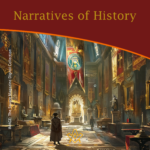 Narratives of History |
 A Very Royal Sesquicentenary |
 Unveiling the Enigma: Discover the Royal Society's Legacy and its Impact on Science. Delve into the fascinating history of the Royal Society, the prestigious UK academy shaping scientific progress since 1660. Explore its pivotal role in advancing knowledge, fostering collaboration, and unlocking the secrets of the universe. Prepare to be amazed! |
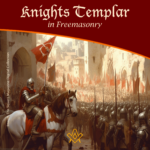 Knights Templar in Freemasonry Uncover the Mysteries of the Knights Templar in Freemasonry! Delve into the intriguing world where chivalry and symbolism intertwine. Discover the captivating rituals and ancient secrets behind the Knights Templar Masonic Orders. Explore the historical connection and delve into the enigmatic narratives that continue to fascinate enthusiasts today. Unveil the hidden truths now! |
 The Royal Arch stands as the rainbow of promise in the Ritual; it stands as the promise of the resurrection; of that which was lost and that it shall be recovered. The question arises as to whether the Master's Word was originally communicated in the Third Degree? On this point there is some diversity of opinion. Originally published in 1915, this insight into the Fourth Degree – the Holy Royal Arch – is as relevant today as it was over 100 years ago. |
 Unveiling the Mysteries of Druidism: Discover the Intriguing Connection with Freemasonry. Explore the ancient spiritual practice of Druidism and its fascinating ties to the enigmatic world of Freemasonry. Delve into the shared symbolism and rituals that have captivated minds for centuries. Unlock the secrets of these intertwined traditions today! |
 Uncover the legacy of freestone masons and their pivotal role in crafting medieval cathedrals. Discover the artistry behind their techniques, the hierarchy within their craft, and the enduring impact of their intricate carvings. A deep dive into the world of these master craftsmen awaits you! |
 Unearth the intriguing journey from Vincha Culture to Freemasonry. Discover how ancient building methods intertwine with modern Masonic philosophies. This exploration will shed light on the fascinating link between the Serbian term "shestarenye" and the symbolic significance of the compass in Freemasonry. |
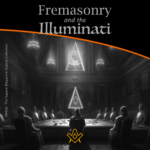 Freemasonry and the Illuminati Unravel the enigmatic world of Freemasonry and the Illuminati in our latest exposé. Dive into centuries-old mysteries, debunk conspiracy theories, and discover the truth behind these elusive societies. Are they puppet masters or mere myths? Join us as we dissect history and fact from fiction. |
 The Île des Templiers, or “Island of the Templars” lies within a leafy park in Paris. The execution site of Jacques du Molay, the last Grand Master of the Knights’ Templar bears a plaque with the epitaph ‘A cet endroit / Jacques de Molay / Dernier grand maître / de l'ordre du temple / a été brûlé le 18 Mars 1314’ (‘In this location / Jacques de Molay / Last grand master / of the order of the temple / was burned on 18 March 1314’) |
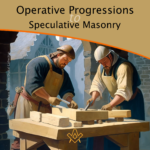 Operative Progressions to Speculative Masonry Both Operative and Speculative Masonry are an important part of the modern fraternity of Freemasonry, which combines elements of both traditions. Today, Freemasonry is a fraternity that is open to men of good character, who are interested in personal development and in making a positive contribution to their communities. |
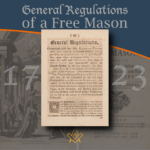 General Regulations of a Free Mason, 1723 General Regulations of a Free Mason as contained in Anderson's Constitutions of the Freemasons, published 1723. the Regulations are of great historical interest. Compiled by George Payne, the second Grand Master of the Premier Grand Lodge of England, they were printed in 1722/3, thus published just over five years after the formation of the Grand Lodge 1717. |
 The Genesis of the 1723 Book of Constitutions 2023, marks the three hundredth anniversary of the publication of the first printed Book of Constitutions of the Grand Lodge formally established in London two years previously. This is an anniversary whose significance extends beyond freemasonry. A paper by Andrew Prescott |
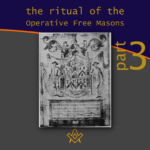 The Ritual of the Operative Free Masons - P3 Existing Operative Free Masons. The ritual I am about to refer, is that of "The Worshipful Society of Free Masons, Rough Masons, Wallers, Slaters, Paviors, Plaisterers, and Bricklayers." By Thomas Carr, M.D., P. M. Honorary Member of the Guild of Operative Free Masons |
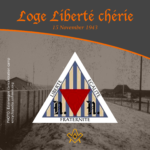 Liberté chérie was a Masonic Lodge founded in 1943 by Belgian Resistance fighters and other political prisoners at Esterwegen concentration camp. It was one of the few lodges of Freemasons founded within a Nazi concentration camp during the Second World War. |
 The Ritual of the Operative Free Masons - P2 If anyone doubts the fact that the formation of Speculative Free Masonry was due to and based upon Operative Free Masonry, it is quite easy to convince him of his error if he will only study the first Book of Constitutions. By Thomas Carr, M.D., P. M. Honorary Member of the Guild of Operative Free Masons |
 In 1881, Freemasonry rose from the ashes of a fire in the mining town of Kokomo, Summit County, Colorado. Corinthian Lodge No. 42, along with Kokomo, no longer exists but it holds the record of having been – at an elevation of 10,618 feet – the highest Masonic Lodge in the USA. |
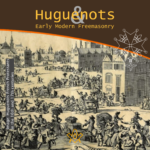 The Huguenots and Early Modern Freemasonry The Huguenots influence in the development of early modern Freemasonry at the time of the formation of the Grand Lodge in London around 1717 / 1723. |
 November is a month of reflection – perhaps due to the fact that we are getting close to the years' end – but also because Remembrance / Armistice Day (11 November) is a significant date in most countries' diaries. |
 Speculative Freemasonry, as practise by Grand Lodge of England, was officially born just over three hundred years ago, is today an international organisation, counting over six million members. It has been subjected to persecution, suppression, and abolition throughout its history. In its infancy, only a couple of decades after its official birth, it had already become a target. |
 The Ritual of the Operative Free Masons - P1 The original paper was written, first, to prove that Speculative Free Masonry was derived from Operative Free Masonry; second, to give some account of the Operative Free Masons, of their Ritual, and of their customs. By Thomas Carr, M.D., P. M. Honorary Member of the Guild of Operative Free Masons |
 American Fraternalism in the 19th and Early 20th Centuries The late 19th and early 20th centuries in the United States has been called the "Golden Age of Fraternalism." How did this come about and why was the idea of joining a fraternal organization so popular? We will explore this question and examine the regalia used by many fraternal organizations in this period. |
 Societas Draconistarum, meaning "Society of the Dragonists"– was a chivalric Order for selected nobility, founded in 1408 by Sigismund von Luxembourg, who through marriage became the King of Hungary (1387–1437) and later Holy Roman Emperor. The Order was fashioned after the military orders of the Crusades, requiring its initiates to defend the cross and fight the enemies of Christianity, in particular the Ottoman Empire. |
 The Perjured Free Mason Detected Was Samuel Prichard a perjured individual, or simply a misguided Freemason? Prichard's book "Free Masonry Dissected" published in 1730, is now used by many Masonic historians as a source of reference with regards to the introduction of the third degree into the Craft. But at the time it was published in 1730, it was not so well received by members of the Grand Lodge of England. |
 17th century and the Holy Royal Arch This article focuses on a period of transition between a point in time when we can safely and historically identify the first formation of what could be called as the ‘Royal Arch’ and the historical events that have preceded it. |
 Most Freemasons have heard the terms 'Operative' and 'Speculative' Masons, and this article helps to understand the difference: |
 Roberts' Constitutions of Freemasonry 1722 Published a year before Anderson's Constitutions, The Old Constitutions Belonging to the Ancient and Honourable SOCIETY OF Free and Accepted MASONS. Originally printed in London England; Sold by J. Roberts, in Warwick-Lane, MDCCXXII.(1722) |
 From 'Songs of religion and life', 1876 by John Stuart Blackie (1809-1895) |
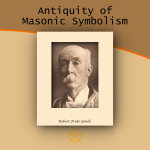 On the Antiquity of Masonic Symbolism Is the Symbolism of Masonry an inheritance derived from the old Masons who flourished before the era of the Grand Lodges (1717); or has it been borrowed from the Rosicrucians or others, after 1717? |
 Mason's Marks – from Egypt to Europe? Mason's marks have been a source of intrigue, not only to Freemasons but to historians and archaeologists. The use of simple pictograms have been employed for millennia by artisans to identify their work. But where did they originate and why? |
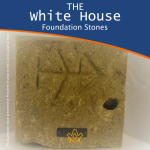 The White House Foundation Stones Further to the articles in our series on the history of the stone masons, we have a rather intriguing addition. During the 1950's renovation of the White House, President Truman retrieved more than 100 stone blocks with stonemasons marks. |
 What the Goose and Gridiron Tavern is in the ancient annals of London Freemasonry, The Green Dragon Tavern is to the memories of the Free-mason, of Boston and New England. |
 Auschwitz concentration camp: video photo article taken in 2013 |
 There are two things of importance happening this day - 27 January |
 Two approaches regarding the understanding of Freemasonry |
 Masonic Research in England c1930 An article which appeared in an American Masonic magazine, c1930 and which was reproduced in England, provoking a little controversy. |
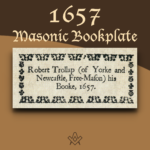 Masonic bookplates the ‘Brethren’s spiritual coats of arms and marks’ |
 The Unlawful Societies Act of 1799 Rebellious Freemasons and the 21st century |
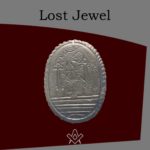 In 1912, Sarah Dowd of Dromore, Ireland, found a Masonic jewel dated 1517 - a date two hundred years before the establishment of Grand Lodge... |
 Freemasonry and Fascist Regime Interesting speech by the famous historian Prof. Aldo A. Mola, who links the fascist regime with the Masonic Associations. |
 Was famous Russian poet Alexander Pushkin a Freemason? And if so, was he a member of the lodge ‘for which all the lodges in Russia were destroyed’? |
 The Importance of Masonic Research Why is accurate - or authentic - Masonic research so important? The importance of making a daily advancement in Masonic knowledge is something that The Square is passionate about promoting. |
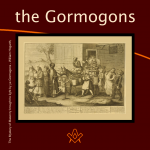 The Antient Noble Order of the Gormogons had a brief existence in the eighteenth century; they left few records or accomplishments, |
masonic knowledge
to be a better citizen of the world
share the square with two brothers

click image to open email app on mobile device








